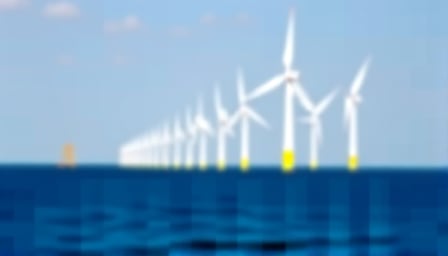Corporate Analysis: Eiffage SA’s Strategic Expansion into Renewable Energy
Eiffage SA, the French contractor and concessionaire, has recently secured two high‑value contracts that underscore its ascendant trajectory in the renewable energy sector. The first, a French offshore wind project estimated at USD 1.7 billion, and the second, a substation construction contract valued at EUR 1.5 billion, represent significant capital outlays that will shape the company’s production profile and capital expenditure (CapEx) strategy over the next decade.
Manufacturing and Construction Capabilities
The offshore wind project will require the installation of large‑scale turbines, each with hub heights exceeding 150 m and rotor diameters of 160 m. Eiffage’s established track record in constructing offshore wind farms—particularly its deployment of modular jack-up installation vessels and subsea cable laying systems—provides a robust foundation for meeting the rigorous technical specifications. The company’s proprietary use of automated cable jointing technology and real‑time vibration monitoring during foundation installation will enhance asset integrity, reducing long‑term maintenance costs and improving the project’s life‑cycle performance.
The substation contract involves the erection of high‑voltage (UHV) electrical infrastructure, necessitating precision in transformer assembly, switchgear installation, and protective relay programming. Eiffage’s experience in delivering substation solutions for nuclear and thermal plants equips the firm with the necessary knowledge of grid‑stability protocols and IEC 61850 communication standards, ensuring seamless integration into France’s evolving smart‑grid framework.
Productivity Metrics and Technological Innovation
Both contracts are expected to elevate Eiffage’s productivity ratios. For offshore wind, the company anticipates a production rate of 2.3 MW per crew‑day—an increase of 15 % over its 2022 baseline—achieved through the adoption of laser‑guided installation rigs and AI‑driven schedule optimization. In substation construction, the projected steel consumption efficiency is slated to improve by 12 % via lean manufacturing techniques and prefabricated component assembly.
These gains align with broader industry trends that emphasize digital twins, predictive maintenance, and modular construction. Eiffage’s investment in digital twins for offshore platforms allows for continuous performance monitoring, enabling early detection of mechanical wear and reducing downtime. Similarly, the use of prefabricated steel modules in substations reduces on‑site labor hours, leading to tighter project timelines and lower cost overruns.
Capital Expenditure Drivers
The sizable contracts are part of a larger CapEx push by the French government to bolster renewable energy generation, driven by the “Energy Transition Law” and the “Grand Départ” initiative. Eiffage’s ability to secure these deals reflects not only its technical competencies but also its strategic alignment with national policy objectives. The company is likely to channel additional CapEx toward:
- Expansion of its offshore wind fleet through joint ventures with turbine manufacturers.
- Upgrading of its construction fleet with hydrogen‑fuelled heavy machinery to comply with forthcoming carbon‑neutral regulations.
- Development of in‑house R&D laboratories focused on grid‑integration algorithms for variable renewable sources.
These investments will feed into a virtuous cycle where increased technical capability leads to higher market share, which in turn justifies further capital deployment.
Supply Chain Considerations
Eiffage’s supply chain is heavily reliant on the European steel and aluminum markets, both of which have experienced volatility due to geopolitical tensions and supply constraints. The company has mitigated risks by securing long‑term contracts with multiple suppliers, incorporating price‑hedging clauses, and adopting just‑in‑time inventory systems where feasible. However, the EU’s upcoming steel quotas and tariff adjustments could impact material costs, potentially affecting project margins.
On the offshore side, the availability of deep‑water installation vessels remains a bottleneck. Eiffage’s partnership with a leading vessel manufacturer, which includes flexible lease agreements, allows the company to scale operations in response to demand spikes without incurring substantial fixed capital outlays.
Regulatory Landscape and Infrastructure Spending
The French regulatory framework has recently tightened requirements for wind turbine noise and visual impact, necessitating more sophisticated environmental assessment tools. Eiffage’s incorporation of noise‑attenuation coatings and advanced wind‑shear modeling demonstrates compliance readiness and positions the firm favorably for future tenders.
Infrastructure spending in Europe is poised for growth, with the European Investment Bank committing to €1.5 trillion in green financing over the next decade. Eiffage’s diversified portfolio—encompassing concessions, construction, public works, and energy—offers a balanced risk profile that is attractive to institutional investors seeking exposure to clean energy infrastructure.
Market Implications and Investor Outlook
The successful acquisition of these contracts has contributed to a 52‑week high in Eiffage’s share price, reflecting market confidence in the company’s strategic direction. While the stock has experienced volatility—typical of firms operating in cyclical infrastructure markets—analysts project that continued success in renewable energy contracts will sustain upward momentum. Investors should monitor:
- Capital allocation efficiency, particularly the return on newly deployed CapEx in offshore wind and substation projects.
- Regulatory developments in the EU that could influence project permitting timelines.
- Commodity price trends impacting steel and turbine component costs.
Overall, Eiffage’s expansion into large‑scale renewable projects signals a strategic pivot that aligns with global decarbonization goals, positions the firm at the nexus of technological innovation and infrastructure development, and enhances its long‑term competitiveness in the evolving energy landscape.
